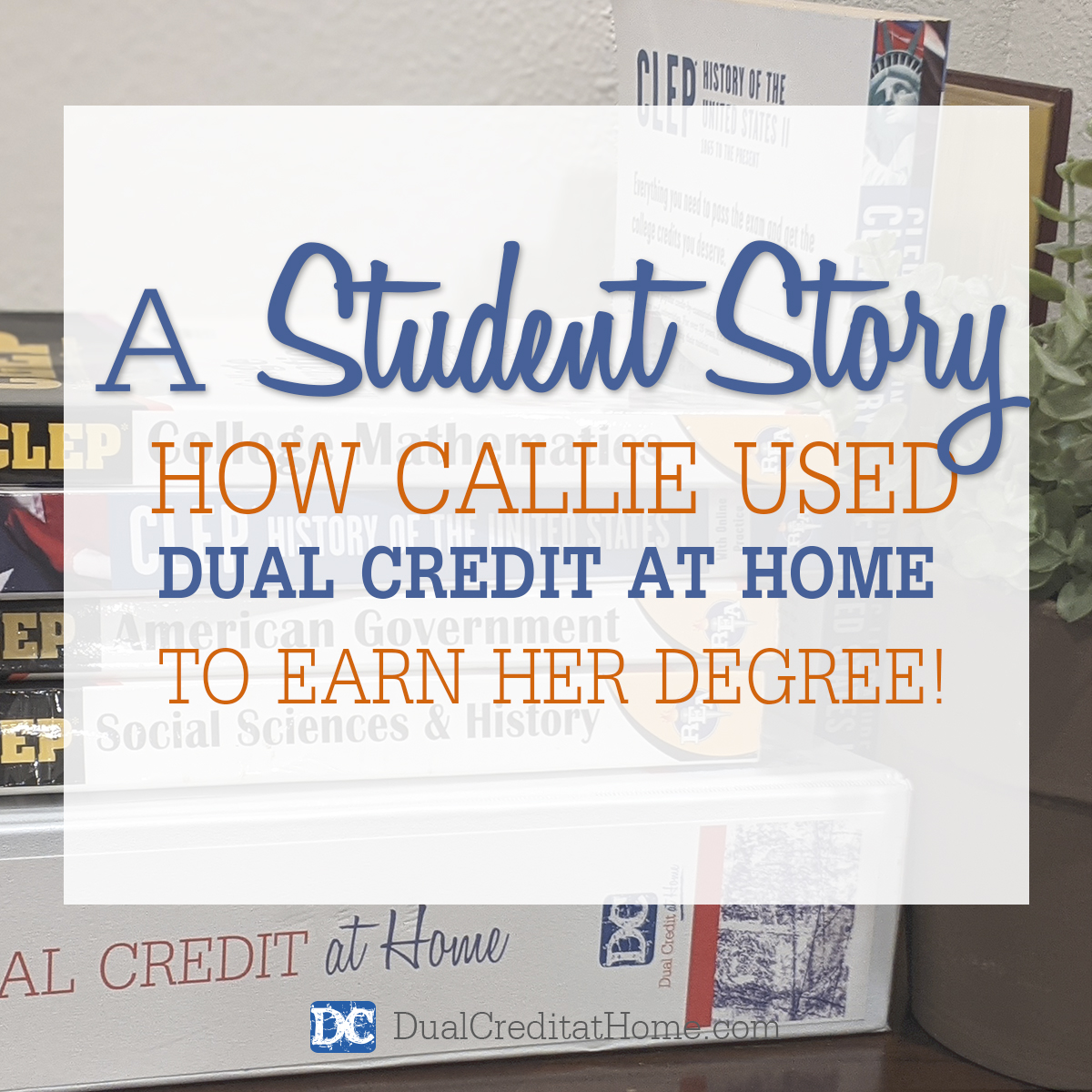There are several ways for homeschoolers to earn dual credit during high school. The most popular options are by taking community college classes, taking online courses, or taking college-level exams for credit. Here are some of the pros and cons for each dual credit option.

Community College Classes
Pros
– Community college classes allow students to learn in an on-campus setting with a teacher who is available to answer questions.
– Students are in class with other students, so there’s lots of opportunities for discussions and group projects.
– Students who attend classes will have a better idea of what college life is like.
Cons
– High school students will be mingling with students who are much older than them, and who may not provide the best influence.
– Students will have to commute to and from classes.
– College classes and textbooks can be a financial burden on parents and students.
Online Classes
Pros
– Online classes are usually cheaper than on-campus classes.
– Classes can be taken from the comfort of the student’s home.
– Students can interact with the professor and other students virtually through chat rooms and discussion forums.
Cons
– There is more room for internet-based distractions.
– Not every student learns well online.
– The teacher may not be able to offer one-on-one assistance if the student is struggling.
– Online classes are usually cheaper than on-campus classes, but not always.
Credit By Exam
Pros
– This is often the cheapest option for students, with exams costing around $85 dollars each for the equivalent of one college class.
– Students work at their own pace from home.
– This is a great option for motivated students who like to work independently.
– It’s also a great option for parents who aren’t ready to send their young teen into the throes of college life.
– Comprehensive study plans are available. Programs like Dual Credit at Home make it easy for students to prepare for CLEP and DSST exams. There’s no prep involved and study plans are delivered weekly to the student’s email inbox.
Cons
– Credit-by-exam may not work well for students who struggle with working independently.
– Exams must be scheduled in advance for each subject.
– Depending on where you live, the testing center may be a considerable commute.
– While many colleges and universities accept CLEP and DSST credits, there are a few that don’t.
Dual credit options are a great way for teens to get a head start on college, saving them time and money in the long run. Have you tried any of these dual credit options? What was your experience like? Tell us what you think of them on the Dual Credit at Home Facebook page.



